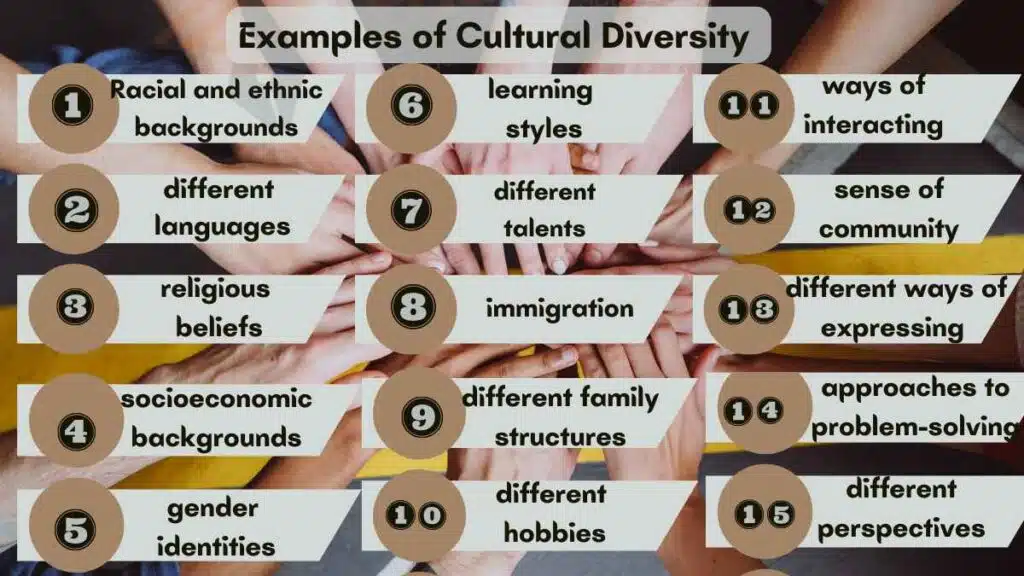15 Examples of Cultural Diversity in the Classroom
Cultural diversity is a rich tapestry of different cultures, traditions, and languages.
It is important to celebrate and promote cultural diversity in the classroom, as it can help students to learn about different perspectives and develop a more global understanding of the world.

Examples of Cultural Diversity
Here are 15 examples of cultural diversity in the classroom.
1. Students from different racial and ethnic backgrounds
Students from different racial and ethnic backgrounds bring their unique cultures and experiences to the classroom.
This can be seen in their food choices, clothing, holidays, and family traditions.
2. Students who speak different languages
Students who speak different languages enrich the classroom with their linguistic skills and cultural knowledge.
They can also help to create a more inclusive environment for all students.
3. Students with different religious beliefs
Students with different religious beliefs share their faith traditions with the class and learn about different perspectives.
This can help to promote understanding and tolerance among students.
4. Students from different socioeconomic backgrounds
Students from different socioeconomic backgrounds offer different perspectives on the world.
They can also share their experiences with different challenges and opportunities.
5. Students with different sexual orientations and gender identities
Students with different sexual orientations and gender identities help to create a more inclusive classroom environment.
They can also help to educate other students about LGBTQ+ issues.
6. Students with different learning styles
Students with different learning styles can benefit from learning from each other.
For example, students who learn best visually can learn from students who learn best auditorily.
7. Students with different talents and abilities
Students with different talents and abilities can contribute to the classroom in different ways.
For example, students who are good at math can help students who are struggling, and students who are creative can help to design projects and presentations.
8. Students who have experienced different cultures through travel or immigration
Students who have experienced different cultures through travel or immigration can share their experiences with the class and help other students to learn about different cultures.
9. Students who have different family structures
Students who have different family structures can share their experiences with the class and help other students to understand that there is no one “right” way to have a family.
10. Students who have different hobbies and interests
Students who have different hobbies and interests can learn from each other and share their knowledge with the class.
For example, students who are interested in art can teach other students about different art techniques, and students who are interested in science can teach other students about different scientific concepts.
11. Students who have different perspectives on current events
Students can have different perspectives on current events, depending on their cultural backgrounds and experiences.
This can lead to rich and meaningful discussions in the classroom.
12. Students who have different approaches to problem-solving
Students have different approaches to problem-solving, depending on their cultural backgrounds and experiences.
This lead to a more creative and innovative classroom environment.
13. Students who have different ways of expressing themselves
Students have different ways of expressing themselves, depending on their cultural backgrounds and experiences.
This lead to a more diverse and vibrant classroom environment.
14. Students who have different ways of interacting with each other
Students have different ways of interacting with each other, depending on their cultural backgrounds and experiences.
This lead to a more respectful and inclusive classroom environment.
15. Students who create a sense of community in the classroom
Students from all backgrounds can come together to create a sense of community in the classroom.
This is done through activities such as sharing food, celebrating holidays, and participating in joint projects.
Cultural diversity is a valuable asset to any classroom. By celebrating and promoting cultural diversity, teachers can create a more inclusive and enriching learning environment for all students.



Leave a Reply